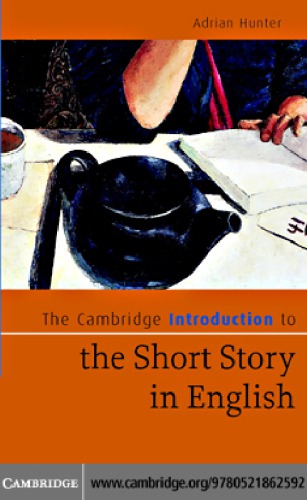

Most ebook files are in PDF format, so you can easily read them using various software such as Foxit Reader or directly on the Google Chrome browser.
Some ebook files are released by publishers in other formats such as .awz, .mobi, .epub, .fb2, etc. You may need to install specific software to read these formats on mobile/PC, such as Calibre.
Please read the tutorial at this link. https://ebooknice.com/page/post?id=faq
We offer FREE conversion to the popular formats you request; however, this may take some time. Therefore, right after payment, please email us, and we will try to provide the service as quickly as possible.
For some exceptional file formats or broken links (if any), please refrain from opening any disputes. Instead, email us first, and we will try to assist within a maximum of 6 hours.
EbookNice Team

Status:
Available4.5
31 reviews
ISBN 10: 0511611366
ISBN 13: 9780521862592
Author: Adrian Hunter
The short story has become an increasingly important genre since the mid-nineteenth century. Complementing The Cambridge Introduction to the American Short Story, this book examines the development of the short story in Britain and other English-language literatures. It considers issues of form and style alongside - and often as part of - a broader discussion of publishing history and the cultural contexts in which the short story has flourished and continues to flourish. In its structure the book provides a chronological survey of the form, usefully grouping writers to show the development of the genre over time. Starting with Dickens and Kipling, the chapters cover key authors from the past two centuries and up to the present day. The focus on form, literary history, and cultural context, together with the highlighting of the greatest short stories and their authors, make this a stimulating and informative overview for all students of English literature.
Introduction
Part I: Introduction: publishers, plots and prestige
1 Charles Dickens and Thomas Hardy
2 Rudyard Kipling and Joseph Conrad
3 The Yellow Book and the 1890s avant-garde
Part II: Introduction: ‘Complete with missing parts’
4 James Joyce
5 Virginia Woolf
6 Katherine Mansfield
7 Samuel Beckett
Part III: Introduction: theories of form
8 Frank O’Connor and Sean O’Faolain
9 Elizabeth Bowen and V. S. Pritchett
10 Angela Carter and Ian McEwan
Part IV: Introduction: a ‘minor’ literature
11 Frank Sargeson and Marjorie Barnard
12 James Kelman and Chinua Achebe
13 Alice Munro
cambridge introduction to
the cambridge introduction series
the cambridge introduction to narrative pdf
a cambridge inn
the cambridge introduction to narrative
cambridge intro
Tags: Adrian Hunter, Cambridge, introduction